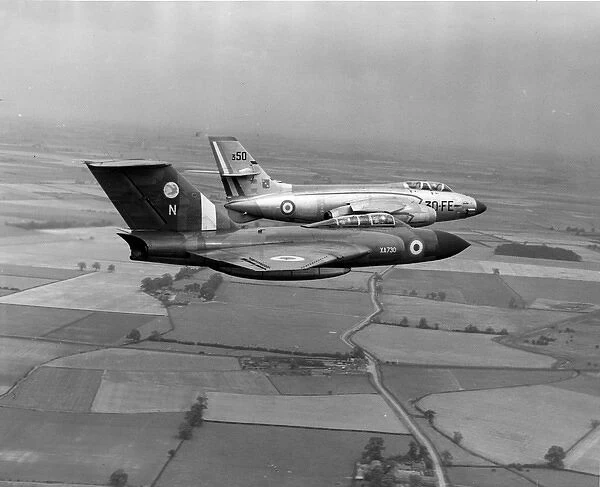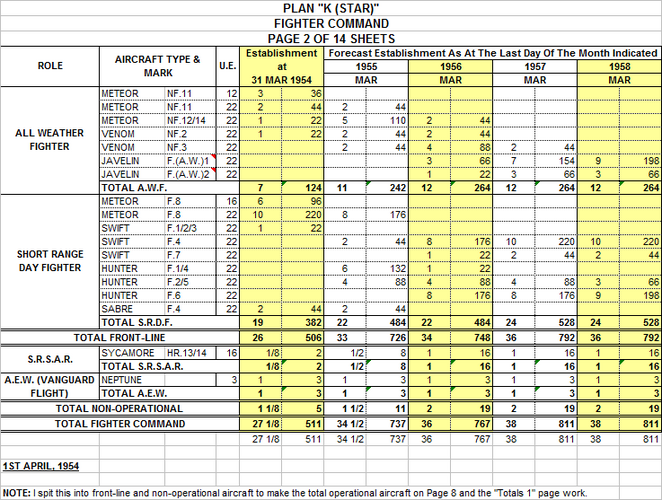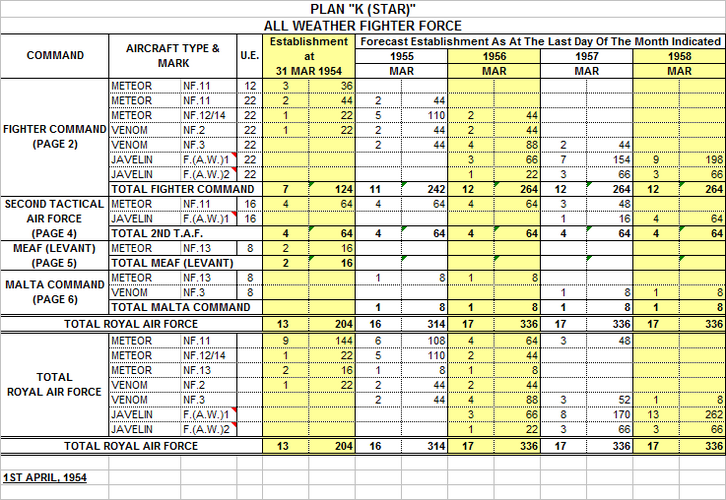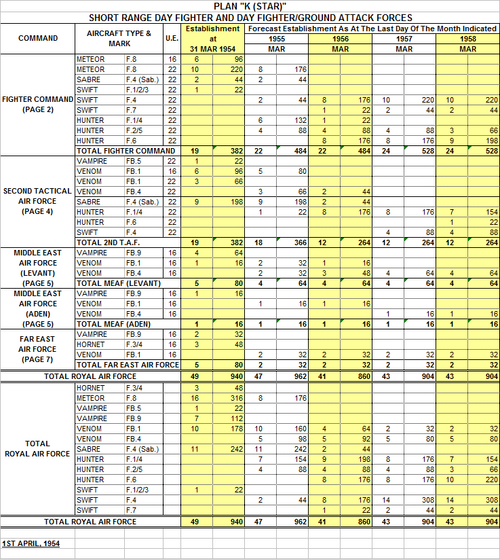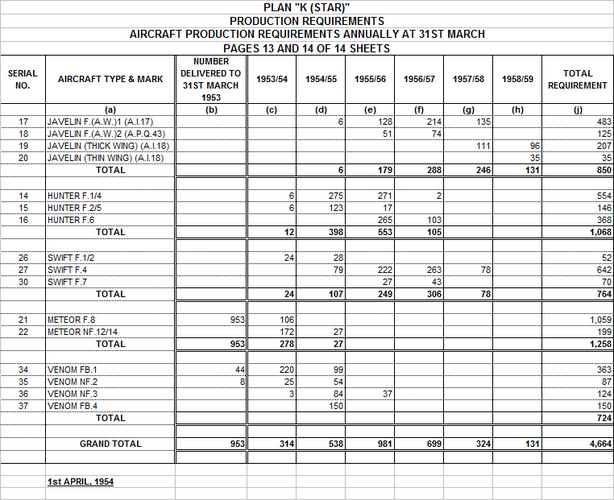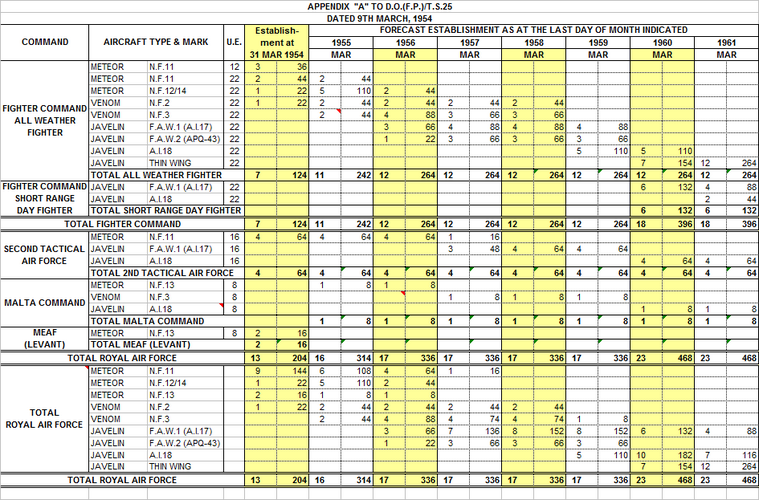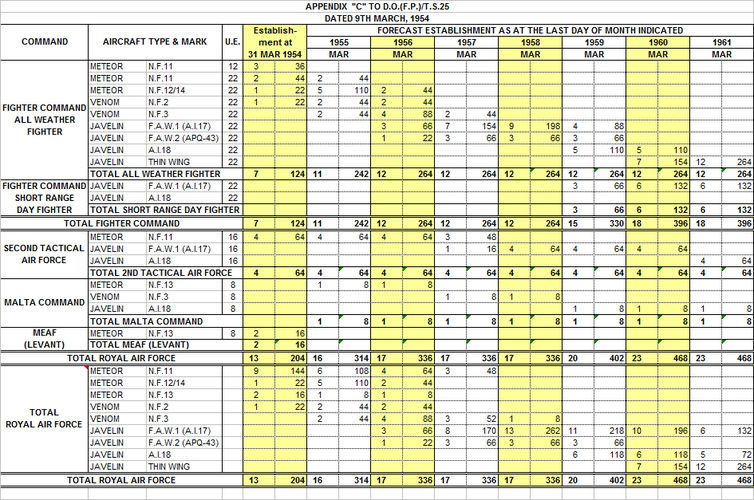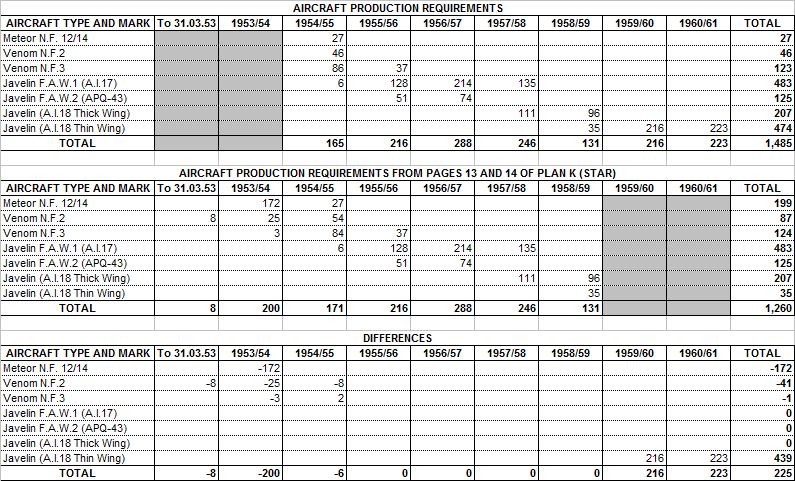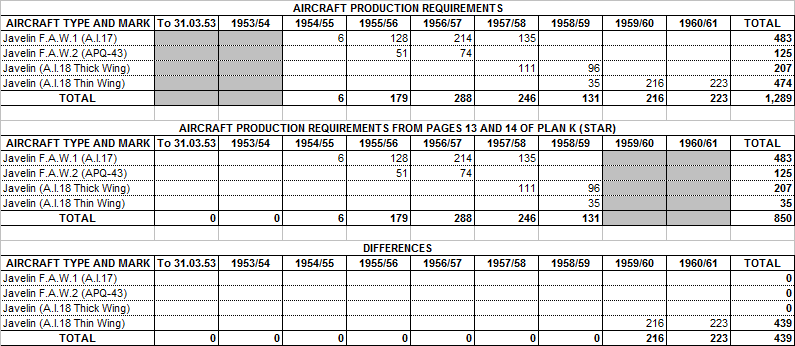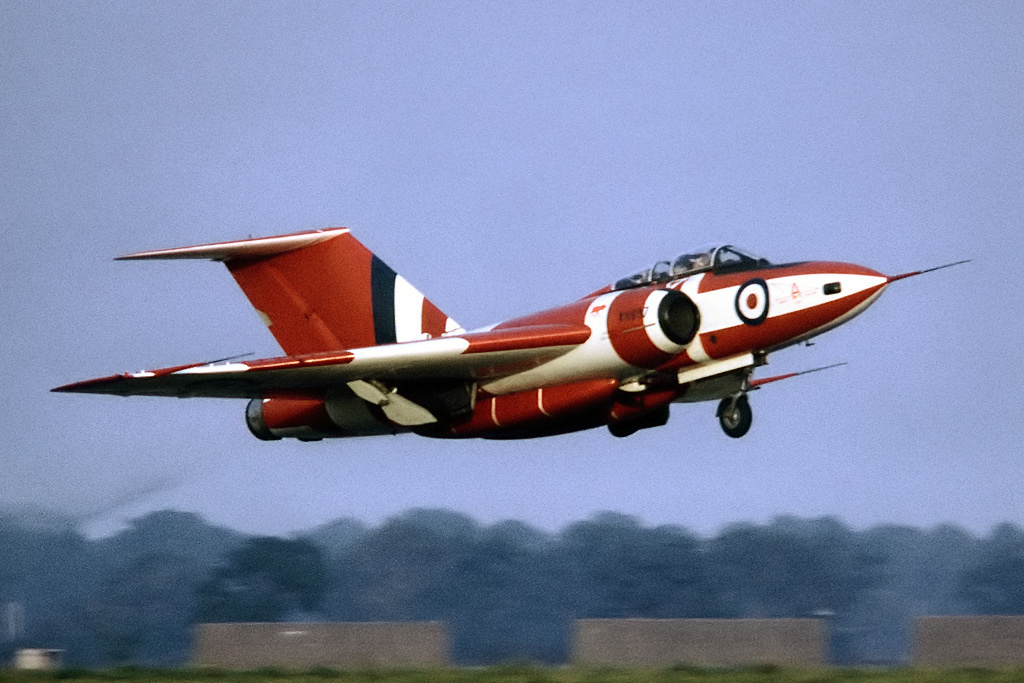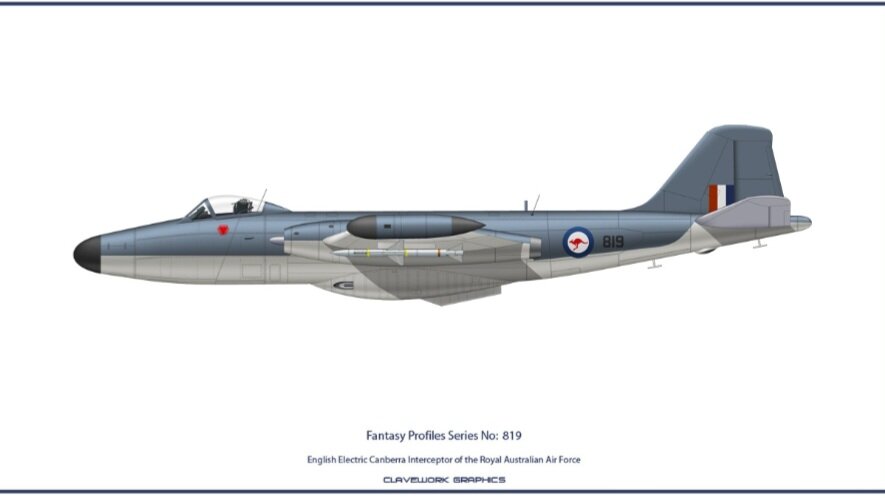Squadron Patterns Plan J date 30.06.52
For what its worth these are the earliest RAF squadron patterns that I have which mention the Javelin.
It starts with the position at 30.06.52 when the World Wide totals for the Night Fighter Force were 136 aircraft in 13 squadrons with 12 or 8 aircraft. That is:
- 16 Mosquito NF.36 in 2 squadrons of 8;
- 72 Meteor NF.11 in 7 squadrons of 8 or 12, and;
- 48 Vampire NF.10 in 4 squadrons of 12.
The totals by Command were:
- 96 aircraft: in 9 squadrons Fighter Command;
- 24 aircraft in 2 squadrons in Second Tactical Air Force, and;
- 16 in 2 squadrons in Middle East Air Force.
This was to have expanded to 376 aircraft in 20 squadrons by 30.06.54 which was to have been maintained to 31.03.58 when the scheme ended. This would have consisted of:
- 264 aircraft in 12 squadrons of 22 in Fighter Command;
- 64 aircraft in 4 squadrons of 16 in Second Tactical Air Force;
- 16 aircraft in one squadron of 16 in the Mobile Reserve (for deployment in MEAF in war);
- 16 aircraft in 2 Squadrons in of 8 in Middle East Air Force, and;
- 16 aircraft in one squadron of 16 in Far East Air Force.
The first Javelin squadron was to have been formed (in Fighter Command) during the quarter ending 30.06.55 and the whole Night Fighter Force would have converted to Javelin all weather fighters by 30.09.57.
Squadron Patterns Plan K date 06.02.53
This plan deleted the Mobile Reserve and the squadron in FEAF. This reduced the peak strength to 344 aircraft in 18 squadrons which would not to be reached until 30.12.55 and be maintained until 31.03.58 when Plan K ended.
The Establishment of the RAF's Night Fighter Force at 31.12.53 was 164 aircraft in 13 squadrons with 16, 12 or 8 aircraft per squadron consisting of:
- 8 Mosquito NF.36 in one squadron of 8;
- 36 Vampires in 3 squadrons of 12;
- 112 Meteor NF.11 in 8 squadrons of 12 or 16 aircraft;
- 8 Meteor NF.13 in one Squadron of 8.
The totals by Command were:
- 84 aircraft in 7 squadrons Fighter Command;
- 64 aircraft in 4 squadrons Second Tactical Air Force; and
- 16 aircraft in 2 squadrons in Middle East Air Force.
The first Javelin squadron was to have been formed during the quarter ending 30.06.55 when there would have been one squadron of 22 in Fighter Command and the whole Night Fighter Force would have converted to Javelin all weather fighters by 30.09.57. This was the same as Plan J after deleting the squadrons in the Mobile Force and Far East Air Force.
Squadron Patterns Plan L dated 15.01.55
The establishment of the Worldwide Night Fighter Force at 31.12.54 was 240 aircraft in 14 squadrons of 16 or 8. They consisted of:
- 124 Meteor NF.11 in 7 squadrons;
- 92 Meteor NF.12/14 in 5 squadrons;
- 8 Meteor NF.13 in one squadron, and;
- 16 Venom NF.2 in one squadron.
Deployment was:
- 168 aircraft in 9 squadrons Fighter Command;
- 64 aircraft in 4 squadrons Second Tactical Air Force, and;
- 8 aircraft in one squadron Middle East Air Force.
The ultimate strength was to be 360 aircraft in 23 squadrons to be reached by 30.06.56 which was to be maintained until the plan ended on 31.03.60. Fighter Command was to have 288 aircraft in 18 squadrons of 16 instead of the 264 aircraft in 12 squadrons of 22 contained in the earlier plans. Second Tactical Air Force would still have 64 aircraft in 4 squadrons of 16. The squadron in MEAF was to have gone by 31.03.55 but would be replaced by a squadron of 8 aircraft in the Malta Command which had previously been included in the MEAF totals.
The Javelin was still to enter service in the quarter ending 30.06.55 when there was still to have been one squadron in Fighter Command, but now at an U.E. of 16 rather than 22 aircraft. The standard Javelin force would reach a peak strength of 352 aircraft in 22 squadrons on 31.03.59 when there would still be one squadron of 8 Venoms.
The thin-wing Javelin would enter service in the quarter ending 30.06.59 when there would be 48 in 3 squadrons in Fighter Command. There would be 264 standard Javelins in 17 squadrons and 96 thin-wing Javelins in 6 squadrons on 31.03.60 when Plan L ended.
I thought that I had some other documents that showed the thin-wing Javelin replacing the standard aircraft one-to-one by 31.03.62 or 31.03.63 but I haven't found them.
However That Isn't What Happened According To Squadron Patterns Plan L dated 30.01.57
At 31.12.57 the RAF should have had 360 night or all weather fighters in 23 squadrons according to the January 1955 version of Plan L. It actually had an establishment of 344 aircraft in 22 squadrons at that date according to the latest version of Plan L
Fighter Command should have had 288 aircraft in 18 squadrons consisting of 96 Venoms in 6 squadrons and 192 Javelins in 12 squadrons. It actually had 272 aircraft in 17 squadrons consisting of only 16 Javelins in one squadron, 128 Meteors in 8 squadrons and 128 Venoms in 8 squadrons.
Second Tactical Air Force did have the prescribed 64 Meteors in 4 squadrons. The Malta Command should have had 8 Venoms in one squadron and it actually had 8 Meteors in one squadron.
The first Javelin squadron had actually been formed in the quarter ending 31.03.56 instead of the quarter ending 30.06.55 as had been scheduled in Plans J, K and L (January 1955 version).
The Javelin only equipped one squadron of 16 aircraft at 31.12.56 and was 176 aircraft in 11 squadrons less than it should have been according to the January 1955 version of Plan L.

